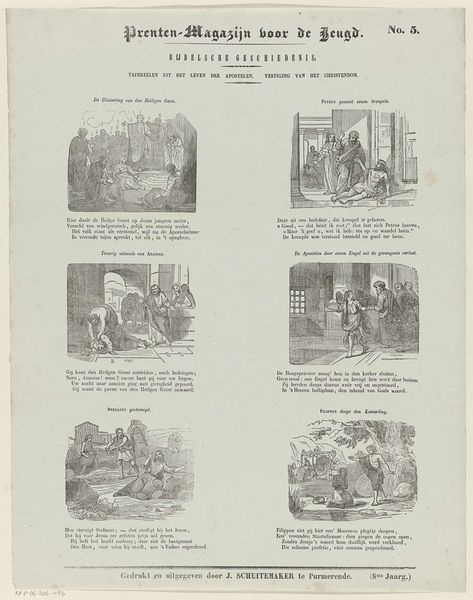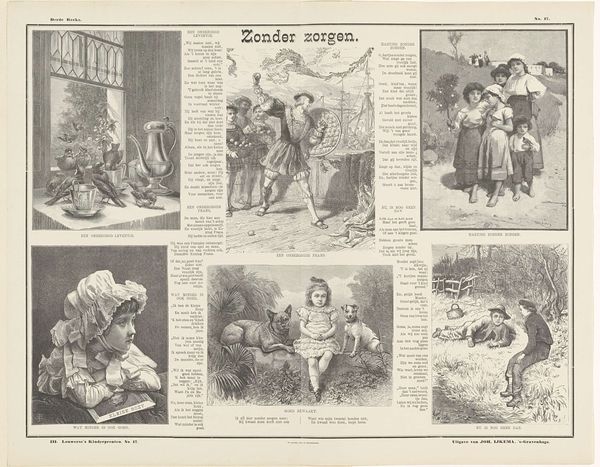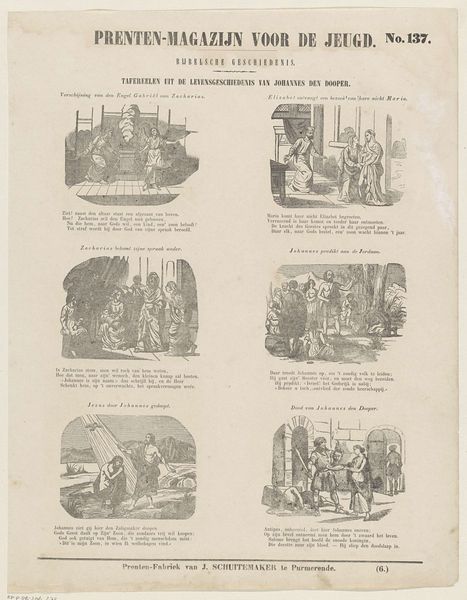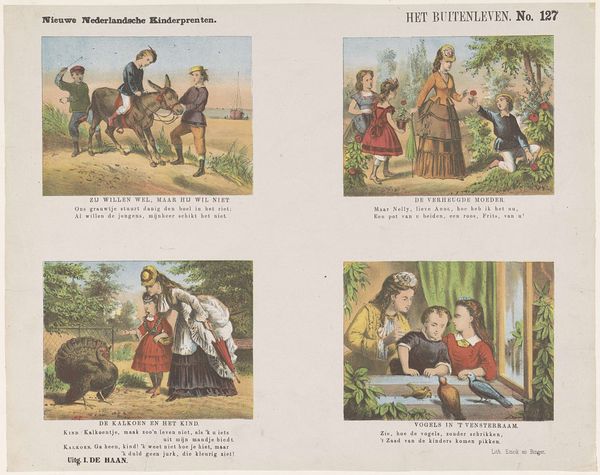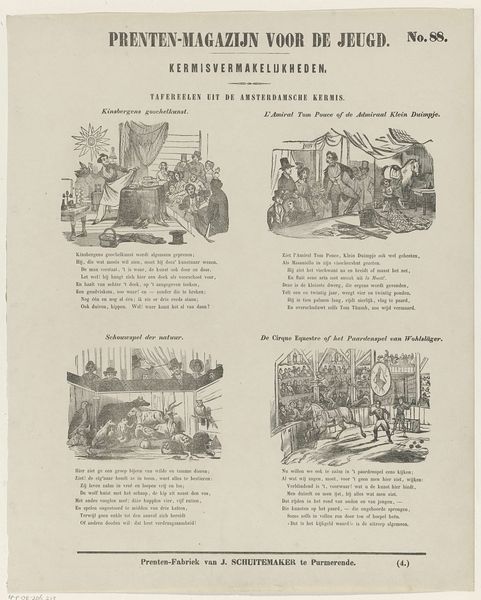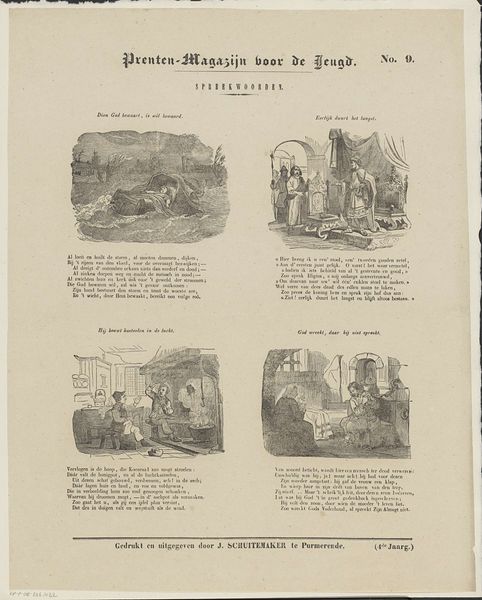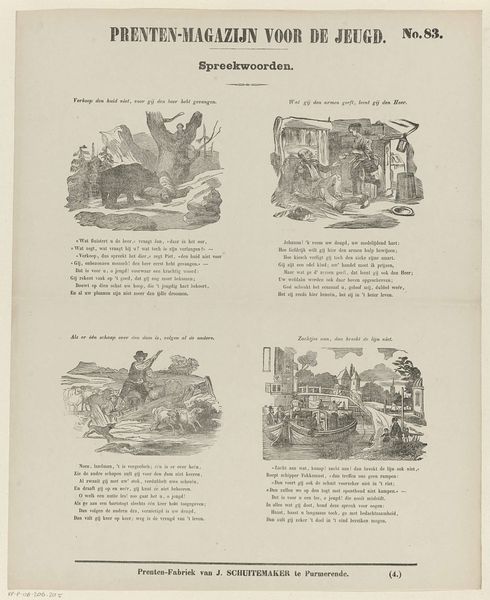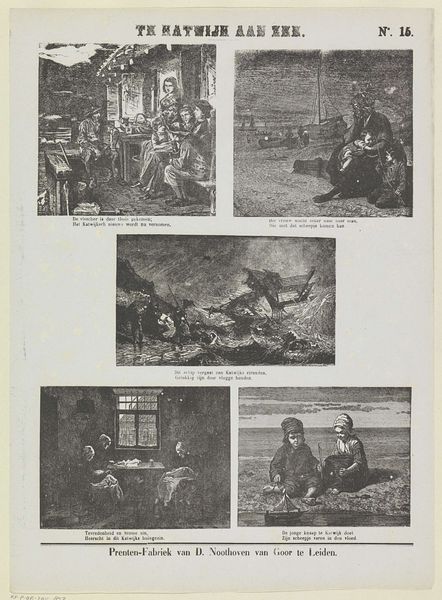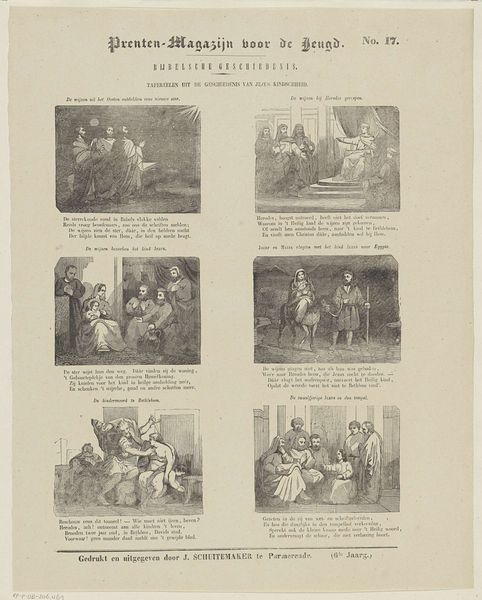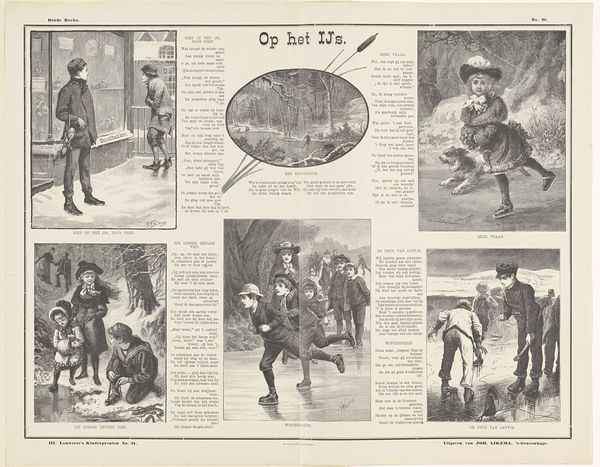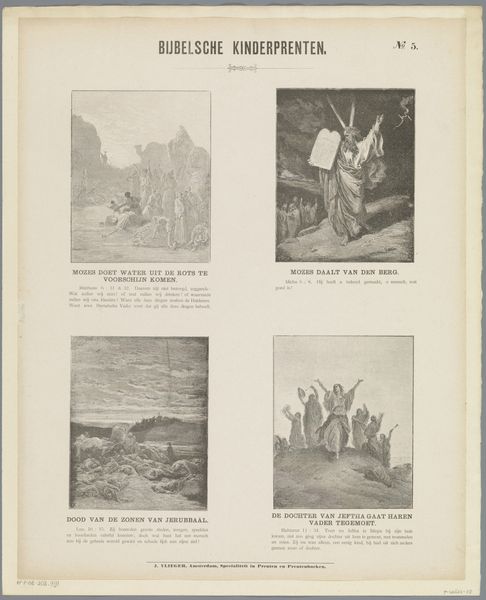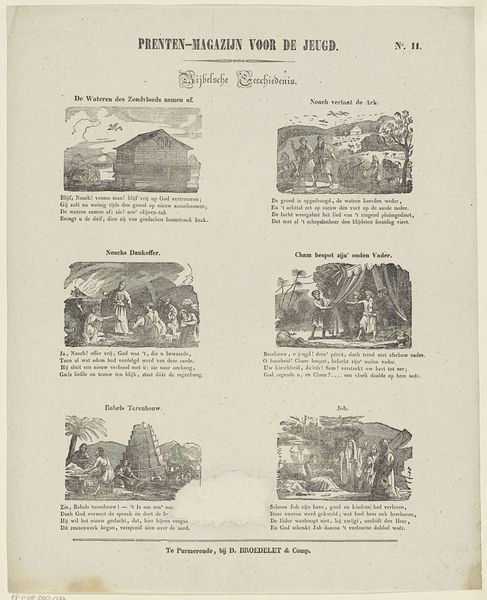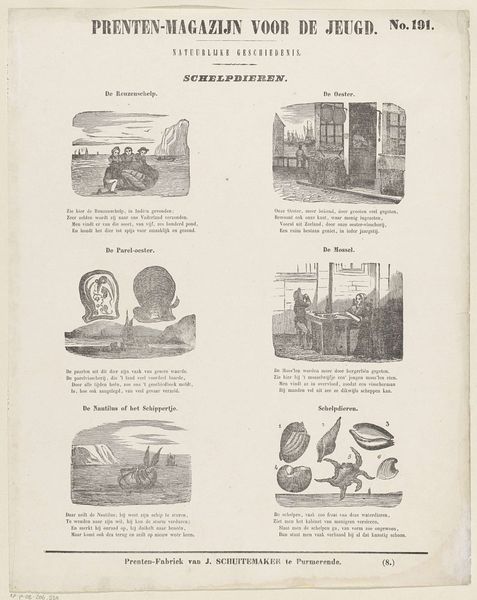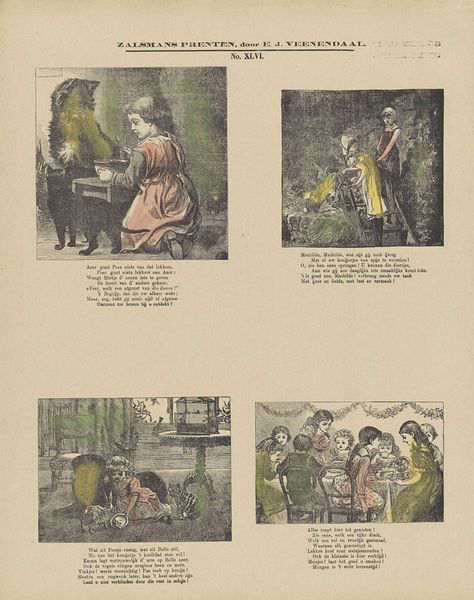
drawing, graphic-art, print
drawing
graphic-art
traditional media
landscape
newspaper layout
genre-painting
Dimensions: height 430 mm, width 550 mm
Copyright: Rijks Museum: Open Domain
Curator: Here we have “Op afgelegen plekjes” which translates to “In secluded spots”, a print dating from between 1905 and 1924. It’s a monochromatic drawing by M. Weber, housed here at the Rijksmuseum. Editor: It strikes me immediately as a newspaper spread, like a story collage before photography fully took over. The mood is very turn-of-the-century melancholic. Curator: Yes, the layout is quite evocative of that period's print media. Look closer, and you see this is indeed assembled of distinct vignettes, little windows into intimate scenes and pastoral settings. There are fragments of genre paintings surrounded by what looks like lyrical poetry. Editor: So, a curated perspective then. The juxtaposition of the romantic verses and humble scenes— a woman by roses, children in dunes, and a girl holding a basket—seems pointed. Is it intended to highlight disparities, to celebrate simplicity, or something else entirely? Curator: Possibly all of that. Symbols recur: enclosed spaces hint at intimacy, rural settings reflect simplicity, suggesting a collective longing for an ideal rooted in folklore or traditional tales. But in Dutch culture especially, you find so much is communicated on this contrast between idyllic ruralism and its disruption by industrialization. Editor: It's quite an emotional appeal then, beyond just aesthetics. What social or cultural anxieties could something like this speak to? I wonder if there’s a gendered element at play in some of these vignettes, too? The woman tending roses, perhaps representing idealized domesticity? And that solitary spinner by the light, it does seem a tad sad, or weary. Curator: Exactly! Those quiet moments tell the tale— nostalgia for lost connections. Weber presents this ideal to challenge our modern restlessness, which rings true even today. Editor: True, these curated, melancholic images present an interesting juxtaposition. Is it possible that each is a commentary, and their presentation creates a meta-narrative around these very Dutch anxieties? That certainly holds up today.
Comments
No comments
Be the first to comment and join the conversation on the ultimate creative platform.
